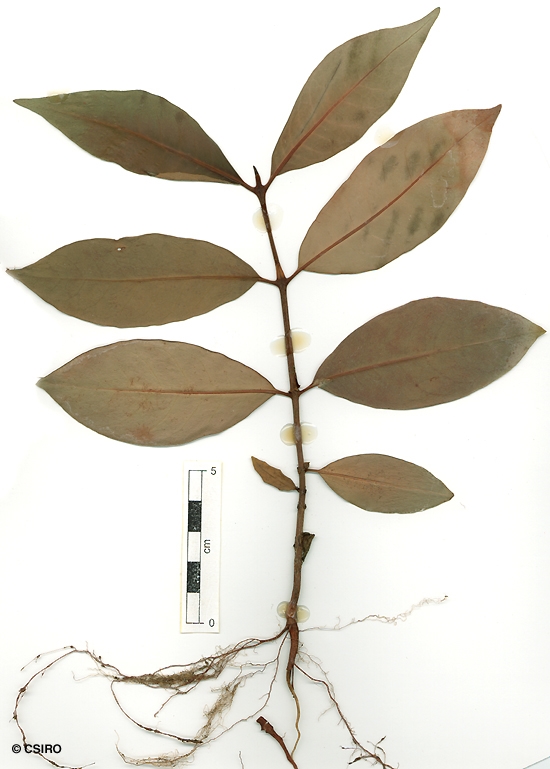Australian Tropical Rainforest Plants - Online edition
Psychotria dallachiana Benth.




Bentham, G. (1867) Flora Australiensis 3: 427. Type: Queensland. Rockingham Bay, Dallachy.
Can grow into a small tree but usually flowers and fruits as a shrub 2-3 m tall.
Calyx glabrous, cup-shaped, calyx tube (hypanthium) about 1 mm long, calyx lobes about 0.2-0.3 mm long. Corolla tube about 1-2 mm long, corolla lobes about 1-2 mm long. Throat of the corolla tube clothed in straight, white, multicellular or moniliform hairs. Anthers purplish, about 1 mm long. Pollen white. Style inserted in a bilobed disk at the apex of the ovary. Stigma hairy, 2-lobed.
Cotyledons ovate, about 10-19 x 9-7 mm, stipulate, base cordate or truncate, petioles short. First pair of leaves opposite and stipulate. At the tenth leaf stage: leaf blade narrowly lanceolate, glabrous, lateral veins forming loops inside the blade margin. Stipules glabrous, about 3.5-7 mm long, encircling the twigs, apex bilobed. Seed germination time 27 to 143 days.
Endemic to Queensland, occurs in CYP and NEQ. Altitudinal range from near sea level to 1200 m. Grows as an understory plant in a variety of rain forest types, often found associated with Kauri Pine (Agathis robusta).





